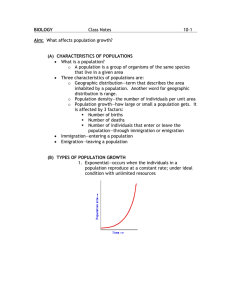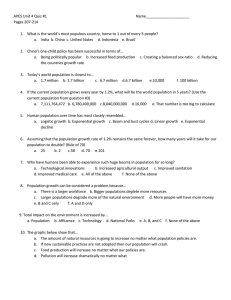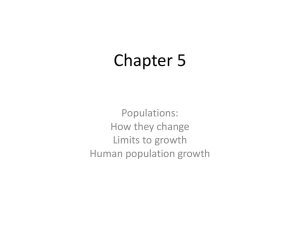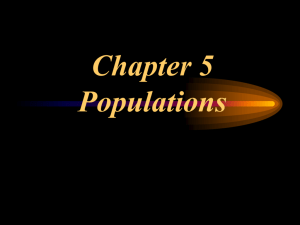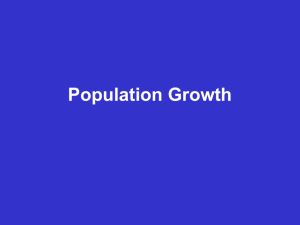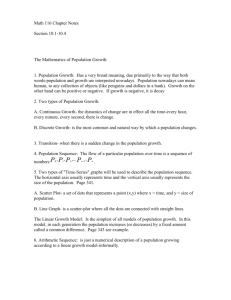UNIT 3 Chp 5.1 and 5.2
advertisement
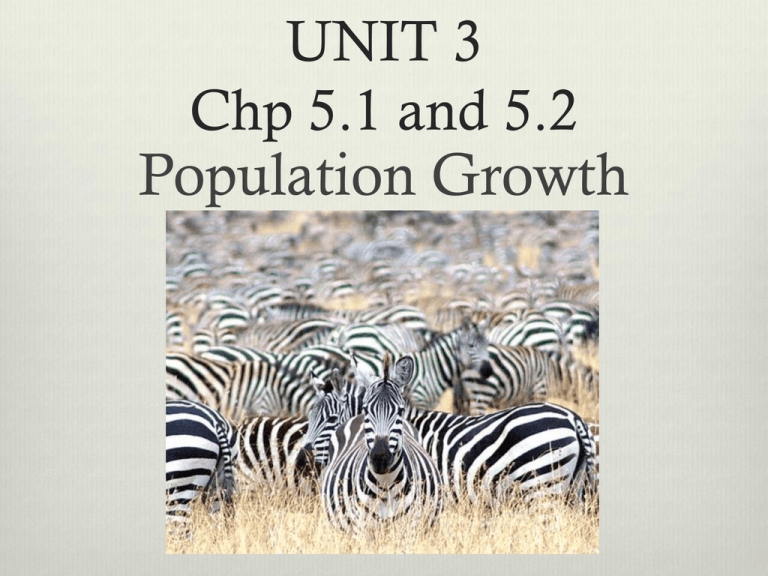
UNIT 3 Chp 5.1 and 5.2 Population Growth 5.1 How populations grow Population – a group of organisms of a single species that lives in a given area. Researchers study populations’ geographic range, density and distribution, growth rate, and age structure. Geographic Range The area inhabited by a population. Can vary greatly in size Geographic range of the American Chestnut Population Density Number of individuals per unit area. Random Uniform Clumped Population Growth Factors that affect population size are the birthrate, death rate, and the rate at which individuals enter or leave the population. Populations can grow if more individuals are born than die in any period of time. Population Growth Immigration- when a population grows if individuals move into a given area. Emigration- when a population decreases in size due to individuals leaving the area. Exponential Growth- under ideal conditions with unlimited resources, a population will grow exponentially. Logistical Growth- occurs when a population’s growth slows and then stops, following a period of exponential growth. Exponential Growth Logistic Growth K is the Carrying Capacitymax # of individuals of a species that an environment can support. 5.2 Limits to Growth Limiting factors determine the carrying capacity of an environment for a species. Density-Dependent Factors-include competition, predation, herbivory, parasitism, disease, and stress from overcrowding. They only act on dense populations, not small scattered ones. Density-Independent Limiting Factors Unusual weather, hurricanes, droughts, wildfires, floods, can cause a population to “crash” and then slowly build back up over time. Invasive Species A non-native species introduced into an area (usually be humans). Many invasive species will overpopulate an area a take up resources from native species. Purple Loosestrife Asian Longhorn Beetle
